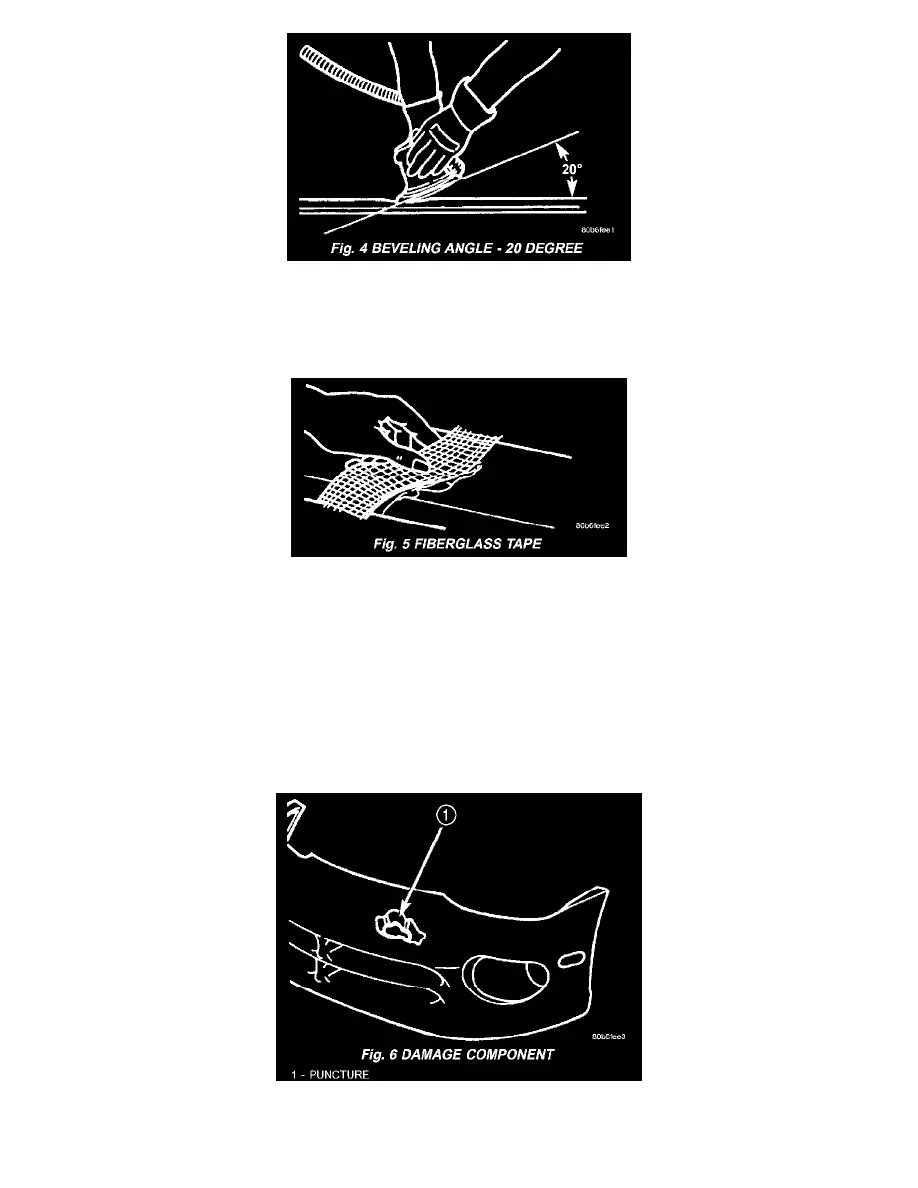Sebring LXI Sedan V6-2.7L VIN R (2002)

Fig. 4
When repairing plastic, the damaged area is first "V'd" out, or beveled. Large bonding areas are desirable when repairing plastic because small repairs
are less likely to hold permanently. Beveling the area around a crack at a 20 degree angle will increase the bonding surface for a repair (Fig.4). It is
recommended that sharp edges be avoided because the joint may show through after the panel is refinished.
Fig. 5
-
Panel repair for both flexible and rigid panels are basically the same. The primary difference between flexible panel repair and rigid panel repair is
in the adhesive materials used (Fig. 5).
-
The technician should first decide what needs to be done when working on any type of body panel. One should determine if it is possible to return
the damage part to its original strength and appearance without exceeding the value of the replacement part.
-
When plastic repairs are required, it is recommended that the part be left on the vehicle when ever possible. That will save time, and the panel will
remain stationary during the repair. Misalignment can cause stress in the repair areas and can result in future failure.
VISUAL INSPECTION
Composite materials can mask the severity of an accident. Adhesive bond lines, interior structure of the doors, and steel structures need to be inspected
carefully to get a true damage assessment. Close inspection may require partial removal of interior trim or inner panels.
Fig. 6
